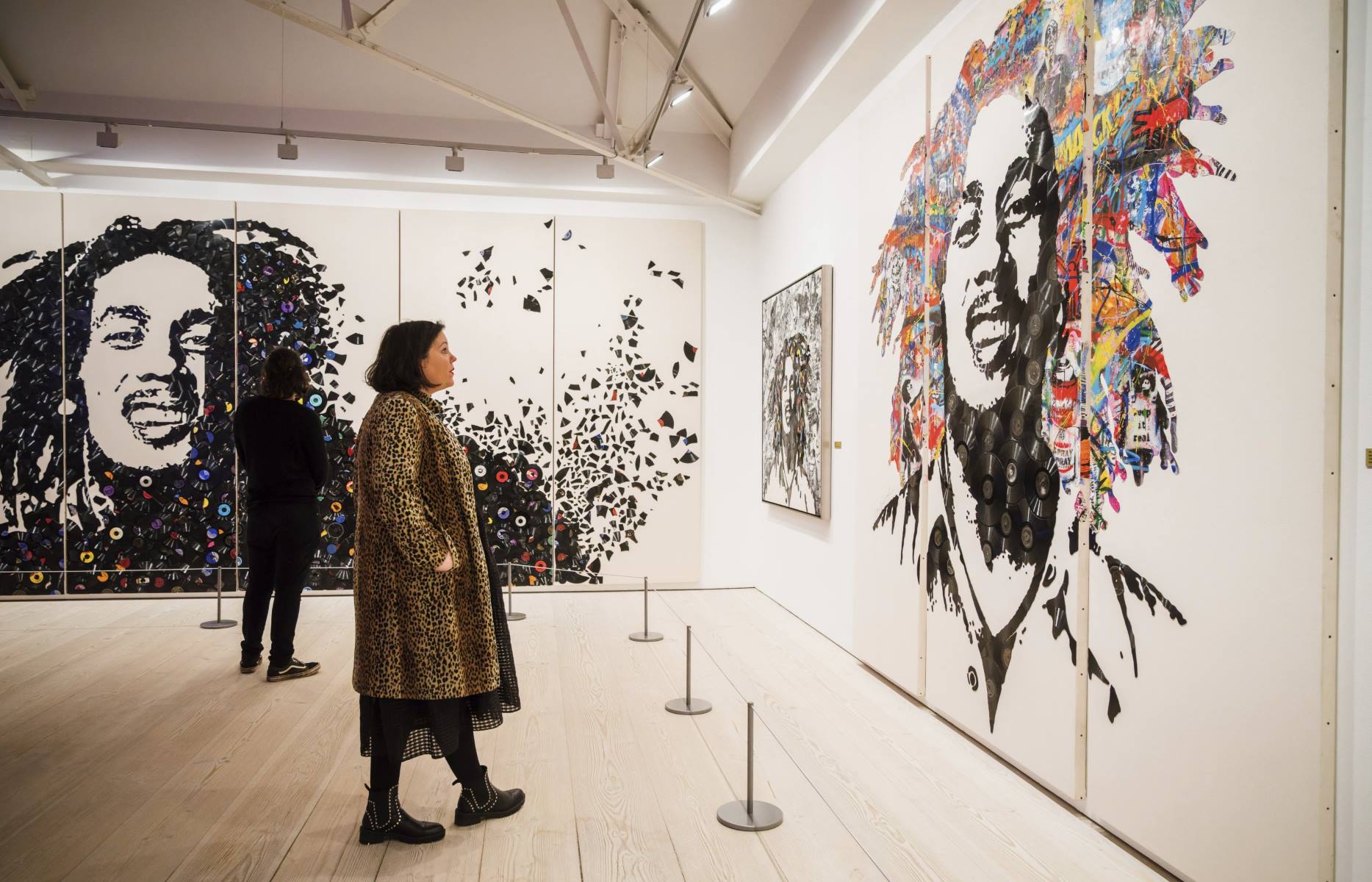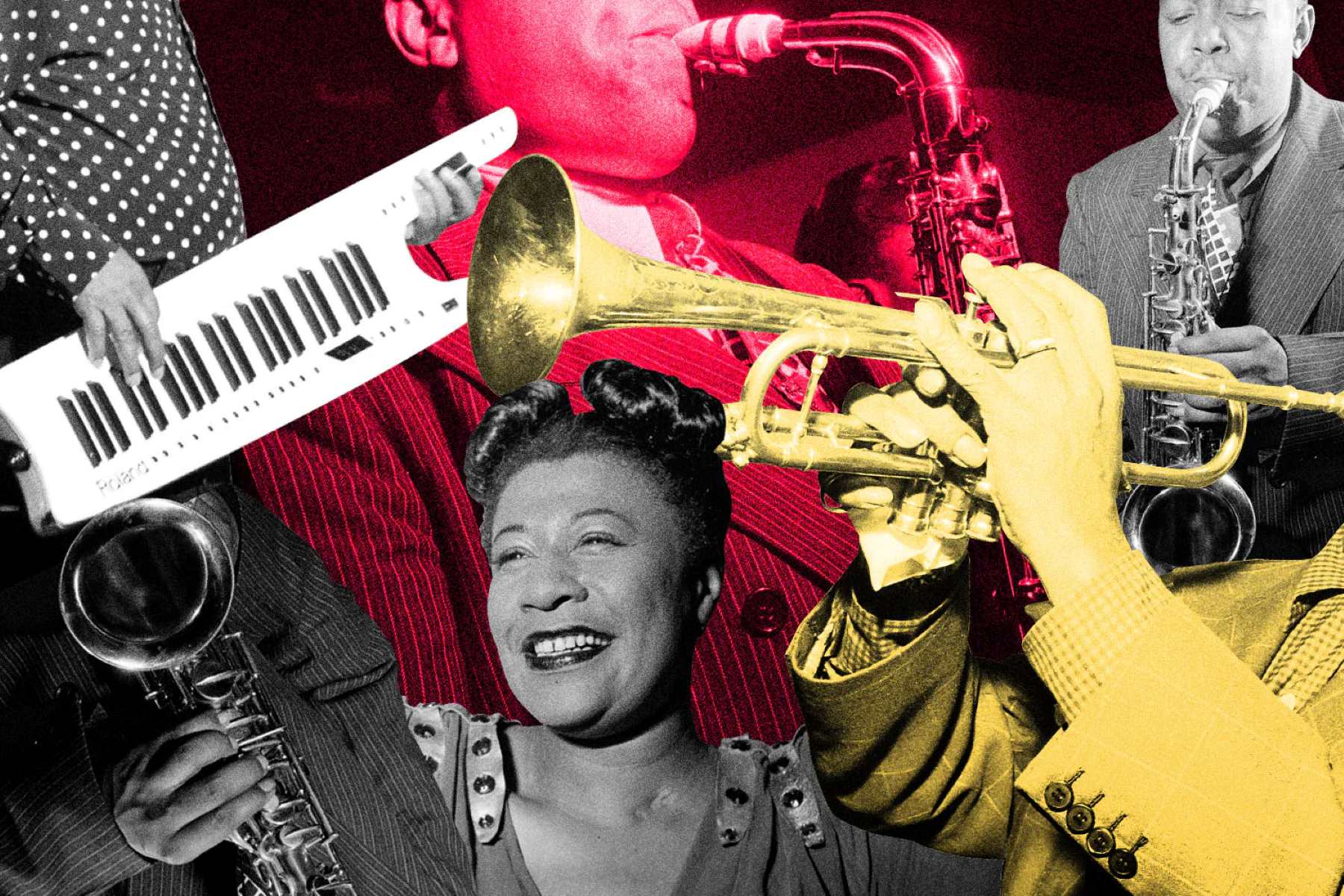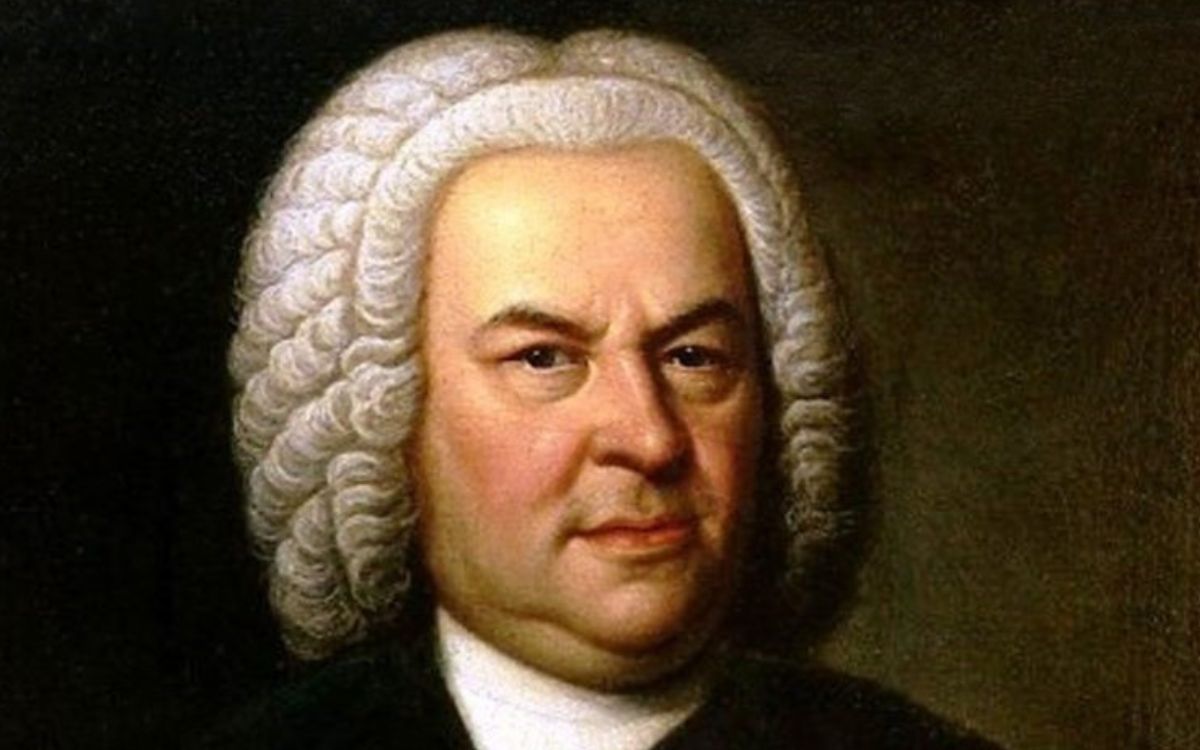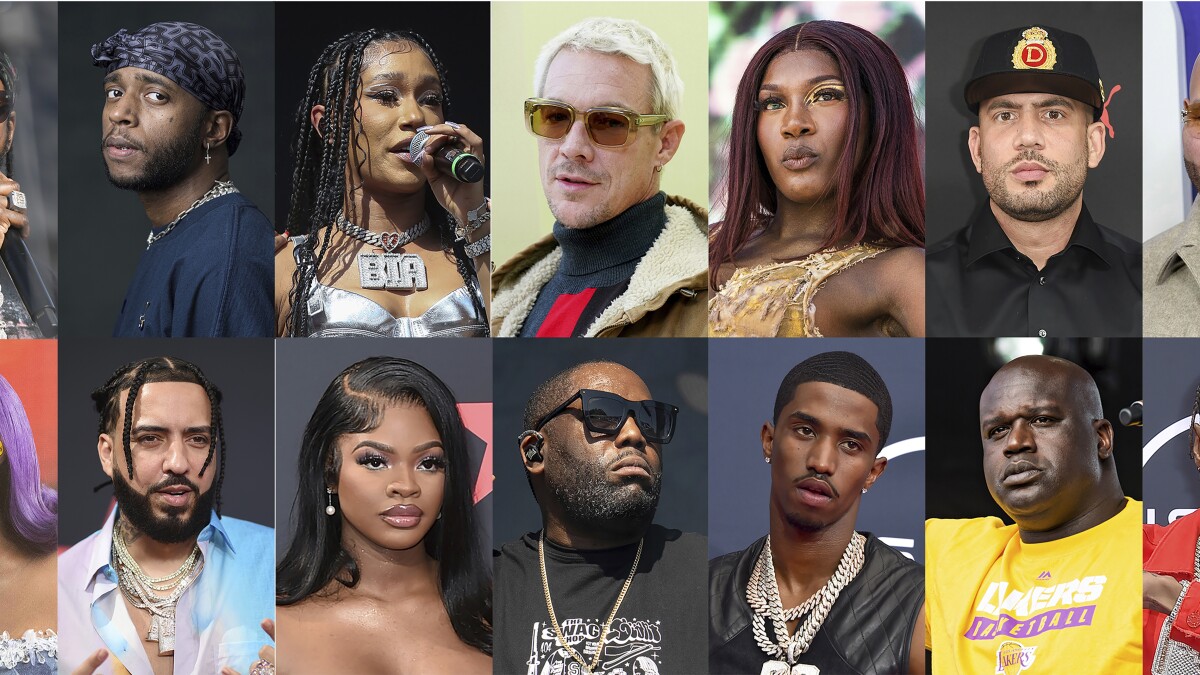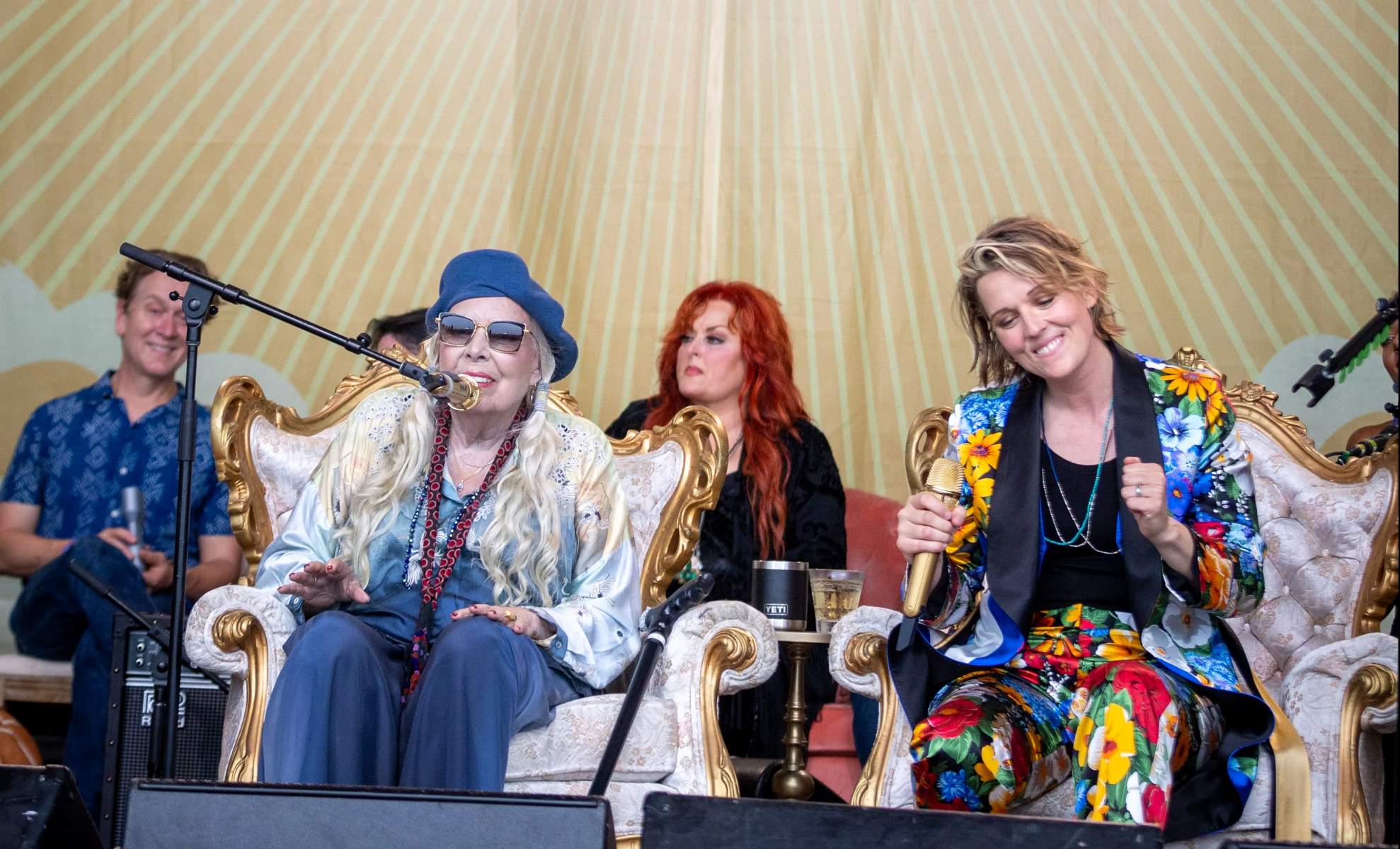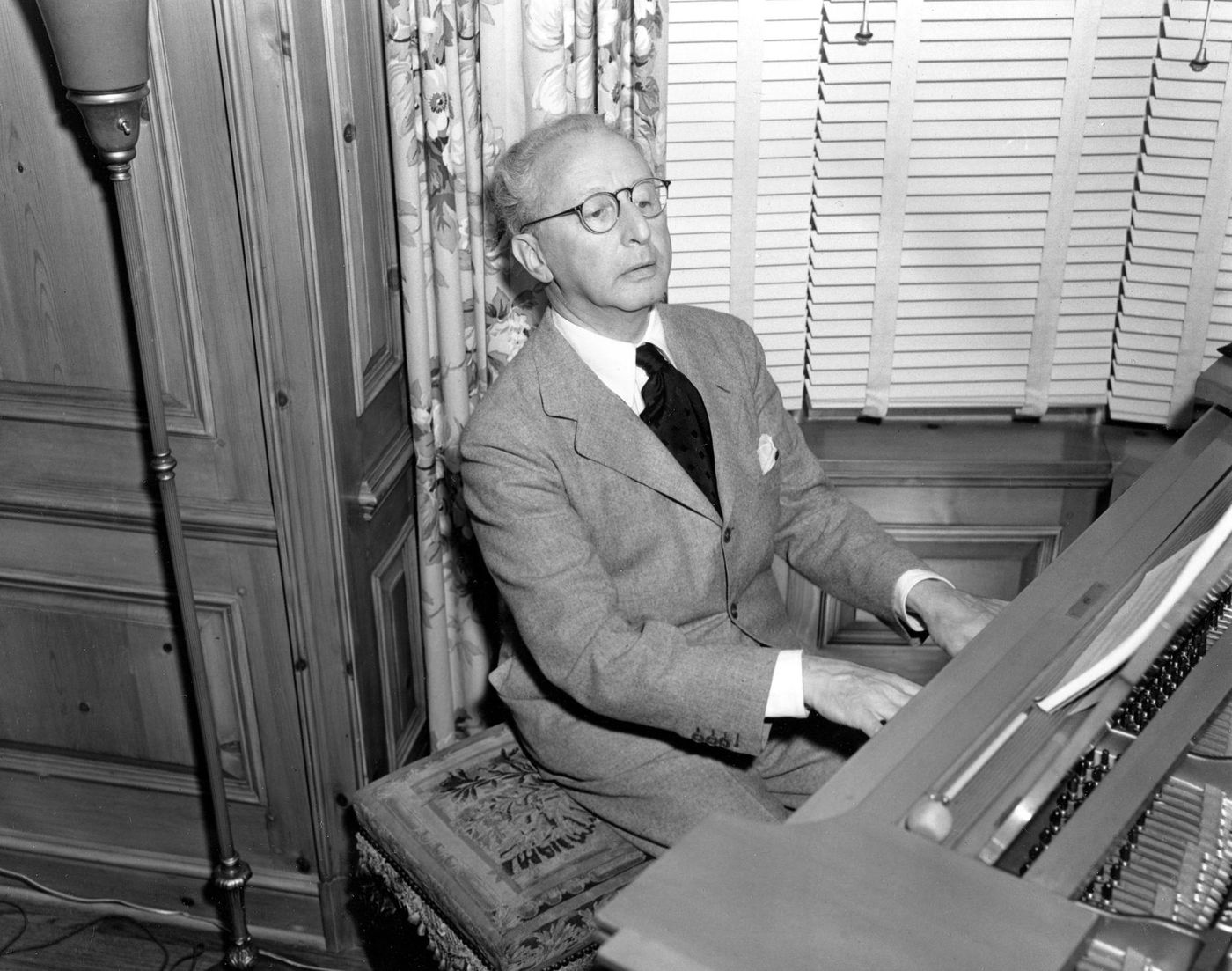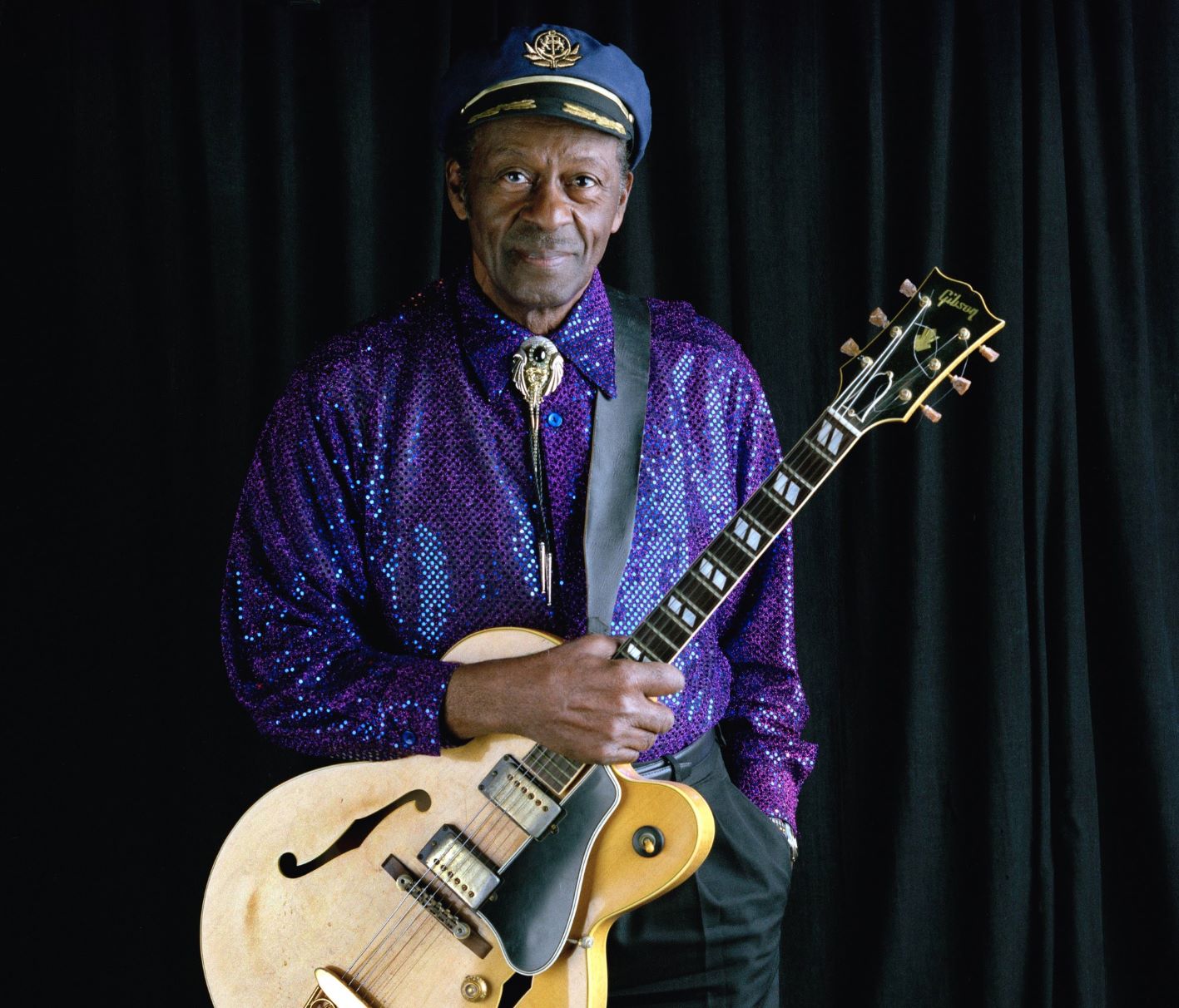Home>Genres>Folk>Who Is Considered The Primary Artist In Folk Music?


Folk
Who Is Considered The Primary Artist In Folk Music?
Modified: January 22, 2024
Discover the primary artist in folk music and explore the rich tapestry of traditional melodies and heartfelt lyrics. Learn about the influential figures in the world of folk and their timeless contributions.
(Many of the links in this article redirect to a specific reviewed product. Your purchase of these products through affiliate links helps to generate commission for AudioLover.com, at no extra cost. Learn more)
Table of Contents
- Introduction
- Definition of Folk Music
- The Concept of Primary Artist in Folk Music
- Factors Influencing the Primary Artist in Folk Music
- Traditional Folk Music: Community and Collective Ownership
- Contemporary Folk Music: The Role of Singer-Songwriters
- Regional Variations in the Primary Artist in Folk Music
- Gender and the Primary Artist in Folk Music
- Challenges in Identifying the Primary Artist in Folk Music
- Conclusion
Introduction
Folk music is a rich and diverse genre that has deep roots in cultures around the world. Known for its simplicity, storytelling, and connection to the common people, folk music has been passed down from generation to generation, evolving and changing along the way. One of the intriguing aspects of folk music is the concept of the primary artist.
In most music genres, the primary artist is easily discernible – it’s the lead singer or band that takes center stage. However, things are not as clear-cut in the world of folk music. Folk music often thrives on communal participation, collaboration, and shared ownership. So who then is considered the primary artist in folk music?
In this article, we will explore the concept of the primary artist in folk music and delve into the factors that influence its determination. We will also examine the variations in the role of the primary artist in different regional contexts and the influence of gender in shaping this role. Additionally, we will touch upon some of the challenges in identifying the primary artist in folk music.
By the end of this article, you will have a better understanding of the complexities surrounding the primary artist in folk music and the ways in which it both mirrors and deviates from other music genres.
Definition of Folk Music
Before diving deeper into the concept of the primary artist in folk music, it’s important to establish a clear understanding of what exactly folk music entails. Folk music is a genre that encompasses a wide range of musical styles and traditions, often originating from the indigenous or ethnic communities of a particular region.
Characterized by its oral transmission, folk music is passed down from generation to generation through songs, stories, and instrumental melodies. It is deeply rooted in cultural heritage and is often associated with social, political, and historical narratives.
What sets folk music apart from other genres is its emphasis on authenticity and connection to the common people. Folk songs typically reflect the experiences, struggles, and aspirations of everyday individuals. As a result, the themes often revolve around love, work, social justice, and cultural identity.
In terms of musical style, folk music is known for its simplicity and the use of traditional instruments such as acoustic guitars, banjos, fiddles, and harmonicas. It often incorporates elements of storytelling, with lyrics that carry significant meaning and imagery.
It’s worth noting that the definition of folk music can vary depending on cultural and regional contexts. Different countries and communities may have their own interpretations of what constitutes folk music, reflecting their unique history, traditions, and musical practices.
Overall, folk music represents the musical expressions of the people, intertwined with cultural heritage and shared experiences. It serves as a platform for storytelling, cultural preservation, and a means for individuals and communities to connect with their roots.
The Concept of Primary Artist in Folk Music
In most music genres, the concept of the primary artist is relatively straightforward. There is usually a defined lead singer or band that takes center stage and is credited as the primary artist. However, folk music deviates from this traditional notion due to its community-based nature and shared ownership.
In folk music, the concept of the primary artist becomes more nuanced. Instead of one individual or group taking the spotlight, folk music often thrives on collective participation and collaboration. It is common to see multiple musicians, singers, and even the audience joining in to create a communal musical experience.
While this communal nature makes it challenging to pinpoint a single primary artist, there are instances where certain figures take on a more prominent role. These individuals may have a strong influence on the performance, songwriting, or interpretation of the music, earning them recognition as primary artists.
It’s important to note that the concept of the primary artist in folk music is not solely based on technical prowess or popularity. Rather, it is often rooted in the ability to connect with the essence of the folk tradition and effectively communicate its stories and messages. The primary artist in folk music is someone who can authentically embody the spirit of the music and convey its underlying emotions.
Moreover, the idea of the primary artist can vary across different folk music traditions and communities. In some cases, the primary artist may be a revered elder or a master musician who carries the knowledge and expertise of the tradition. In other instances, it could be a group of musicians who collectively contribute to the creation and dissemination of the music.
Overall, the concept of the primary artist in folk music reflects the collaborative and inclusive nature of the genre. While there may not be a clear-cut definition or singular individual that fits the mold, there are certain individuals or groups who play a crucial role in preserving and shaping the spirit of folk music.
Factors Influencing the Primary Artist in Folk Music
Several factors come into play when determining the primary artist in folk music. While the concept of the primary artist in folk music is not as straightforward as in other genres, these factors contribute to the recognition and prominence of certain individuals or groups within the folk music community.
1. Skill and Expertise: The skill and expertise of the musician or group can heavily influence their status as a primary artist. Their technical proficiency, ability to interpret traditional songs, and mastery of their instrument can earn them respect and recognition within the folk music community.
2. Songwriting and Composition: If a particular individual or group is known for their songwriting abilities and contributions to the repertoire of folk music, they may be regarded as primary artists. Their original compositions, which capture the spirit and essence of folk music, can have a lasting impact on the genre.
3. Connection to Tradition: The degree to which an artist or group is connected to the folk music tradition can also influence their role as primary artists. Those who have deep roots in their cultural heritage, actively participate in traditional music events, and embody the customs and values associated with folk music are likely to be considered primary artists.
4. Influence and Legacy: The influence and legacy of an artist within the folk music community can significantly impact their standing as a primary artist. Artists who have inspired and influenced subsequent generations, leaving a lasting mark on the genre, are often recognized as primary artists.
5. Community Recognition: In folk music, the recognition and support of the community play a pivotal role in determining the primary artist. If an artist or group is embraced by their local community and respected for their contributions to folk music, they are more likely to be seen as primary artists.
It’s important to note that these factors are not mutually exclusive, and multiple factors can contribute to an artist’s recognition as a primary artist in folk music. Moreover, the prominence of the primary artist can shift over time as new voices emerge and artistic contributions evolve.
Overall, the factors influencing the primary artist in folk music are multifaceted, combining elements of skill, songwriting, connection to tradition, influence, and community recognition. By considering these factors, we can gain a deeper understanding of how the primary artist in folk music is determined within the dynamic and collective nature of the genre.
Traditional Folk Music: Community and Collective Ownership
In traditional folk music, the concept of the primary artist is often intertwined with the notions of community and collective ownership. Traditional folk music is deeply rooted in the shared experiences, values, and cultural heritage of a specific community or region.
Unlike other genres where individual artists dominate, folk music is a product of communal participation. It is created, shared, and passed down through generations within a community. The music is not owned by any single individual, but rather by the collective group of musicians, singers, and listeners.
In this context, the primary artist in traditional folk music is not about individual recognition or fame, but rather about embodying the voice of the community. The primary artist is seen as a representative or custodian of the folk tradition, responsible for preserving and transmitting the music to future generations.
In many traditional folk music cultures, the primary artist may be an elder or a respected member of the community who has a deep understanding of the music’s history, repertoire, and cultural significance. They serve as the keeper of the tradition, ensuring its continuity and authenticity.
Furthermore, traditional folk music often thrives on collective performances and informal gatherings. The focus is not solely on showcasing individual skills, but rather on creating a sense of community and connection through music. Everyone has a role to play, and the boundaries between performer and audience are blurred.
This collective approach to folk music highlights the egalitarian nature of the genre. It emphasizes the idea that folk music belongs to everyone and that participation is key to its preservation. All members of the community are encouraged to contribute their voice and interpretation, creating a rich tapestry of diverse styles and perspectives.
Overall, in traditional folk music, the primary artist is deeply intertwined with community and collective ownership. The focus is not on individual artists but on the communal spirit, shared experiences, and the preservation of cultural heritage. It exemplifies the power of music to bring people together and create a sense of belonging.
Contemporary Folk Music: The Role of Singer-Songwriters
In contemporary folk music, the role of the primary artist has seen a shift towards singer-songwriters. Singer-songwriters play a significant role in shaping and defining the genre, as they are often the ones writing and performing their own original material.
Unlike traditional folk music with its emphasis on collective ownership, contemporary folk music places a greater focus on individual expression and personal storytelling. Singer-songwriters use their music as a platform to share their unique perspectives, experiences, and social commentary.
These artists often accompany themselves on acoustic instruments such as guitars, pianos, or ukuleles, creating an intimate and introspective sound that resonates with audiences. Their lyrics delve into a wide range of themes, including love, identity, social justice, and environmental issues.
The singer-songwriter’s ability to connect with listeners on a personal level is a defining characteristic of contemporary folk music. Their songs often evoke emotions and capture the essence of the human experience, providing a voice for the audience and reflecting their own struggles and aspirations.
While singer-songwriters take on the role of the primary artist in contemporary folk music, collaboration and community involvement are still prevalent. Many artists collaborate with fellow musicians, forming bands or engaging in collaborative projects to expand their musical horizons.
Moreover, the folk music community continues to support and nurture emerging singer-songwriters through folk festivals, open mic nights, and songwriter circles. These platforms provide opportunities for artists to share their music and connect with like-minded individuals.
It’s important to note that the role of the primary artist in contemporary folk music is not limited to solo singer-songwriters. There are still instances where bands or collectives take center stage, creating a blend of musical styles and collective songwriting.
Overall, in contemporary folk music, singer-songwriters have emerged as the primary artists. They bring a sense of personal storytelling and individual expression to the genre, creating intimate connections with listeners. While maintaining their role as primary artists, singer-songwriters also continue to collaborate and engage with the folk music community, showcasing the dynamic nature of the genre.
Regional Variations in the Primary Artist in Folk Music
Regional variations play a significant role in shaping the concept of the primary artist in folk music. Different cultures and geographical areas have their own unique traditions, musical styles, and understandings of folk music, leading to variations in the role of the primary artist.
In some regions, the primary artist is often a respected elder or a master musician who holds deep knowledge and expertise in the local folk music tradition. These individuals are considered the guardians of the music and are highly revered within their communities.
For example, in Irish folk music, the role of the primary artist is often bestowed upon a sean-nós singer, someone who possesses exceptional vocal skills and preserves the ancient style of unaccompanied singing. These singers are seen as the bearers of cultural heritage and the primary interpreters of traditional songs.
In contrast, in the American Appalachian region, the primary artist in folk music may be defined by their instrumental prowess. Fiddlers, banjo players, and guitarists who have honed their skills on traditional Appalachian tunes may take on the role of the primary artist, leading and guiding the musical performances.
Similarly, in regions with strong ballad traditions, such as Scotland or the American Deep South, the primary artists are often balladeers who specialize in storytelling through song. Their ability to captivate audiences with their storytelling skills and convey the emotions of the narrative sets them apart as the primary interpreters of the tradition.
It’s important to recognize that these regional variations are not limited to specific countries or continents. Within a single country, there can be significant regional differences in how the primary artist is defined and valued within the folk music community.
Furthermore, globalization and cultural exchange have also influenced the concept of the primary artist in folk music. Artists who bridge different musical traditions or fuse folk music with contemporary elements may gain recognition as primary artists, representing a blending of regional and global influences.
Overall, regional variations in the primary artist in folk music demonstrate the diverse and evolving nature of the genre. The role of the primary artist is shaped by cultural traditions, geographical contexts, and the particular strengths and contributions of individuals or groups within a specific region.
Gender and the Primary Artist in Folk Music
The role of gender in defining the primary artist in folk music has been a topic of significant discussion and evolution. Historically, folk music has often been dominated by male artists, with women’s contributions overlooked or marginalized. However, in recent years, there has been a growing recognition and celebration of women’s voices and contributions within the genre.
Traditionally, women have played vital roles in preserving and performing folk music through their involvement in family and community singing traditions. They have often acted as keepers of songs, passing them down through generations and keeping their cultural heritage alive.
Despite this essential role, women were often overshadowed by male performers in the public sphere. Male artists were more likely to be recognized as primary artists and given opportunities for professional careers in folk music.
However, the folk music landscape has gradually shifted, with more women stepping into the spotlight as influential primary artists. Female singer-songwriters have emerged as powerful voices, using their music to express their unique perspectives and challenge societal norms.
Moreover, women have been reclaiming their place within traditional folk music and revitalizing women-centered narratives. They revisit and reinterpret traditional songs, bringing attention to women’s experiences, femininity, and social issues that affect them.
In recent years, there has also been a rise in women-led folk bands and all-female collaborations, breaking down barriers and redefining the role of the primary artist within the genre. These groups showcase not only their musical talents but also their ability to foster a sense of connection, solidarity, and empowerment among women in the folk music community.
It’s important to recognize that the progress in gender equality within folk music is an ongoing process. While there have been significant advancements, there is still work to be done to ensure equal representation and opportunities for all genders.
With continued efforts to amplify women’s voices, challenge gender stereotypes, and promote inclusivity, the primary artist in folk music is becoming increasingly diverse and reflective of the rich contributions of all artists, regardless of their gender.
Ultimately, gender should not determine or limit an artist’s ability to be seen as a primary artist in folk music. It is the talent, passion, and connection to the tradition that should guide the recognition and appreciation of an artist’s contributions within the genre.
Challenges in Identifying the Primary Artist in Folk Music
The concept of the primary artist in folk music presents several challenges due to the genre’s communal and collaborative nature. Unlike other music genres where the primary artist is easily identifiable, determining the primary artist in folk music can be subjective and fluid.
One of the main challenges is the blurred distinction between performer and audience. In folk music, the audience often actively participates in the music-making process, singing along and providing harmonies. This collective involvement makes it difficult to pinpoint a singular primary artist, as the lines between performer and audience become blurred.
Additionally, folk music places great value on the collective ownership of songs and cultural heritage. The music is passed down through generations, with multiple individuals contributing to its preservation and evolution. This shared ownership challenges the notion of a single primary artist, as the music reflects a collective effort rather than individual prominence.
The fluidity of folk music also poses challenges in identifying the primary artist. Folk songs and melodies can be adapted and re-interpreted by different artists, making it challenging to assign sole ownership or primary status to any one performer. The beauty of folk music lies in its ability to evolve and adapt, with each artist bringing their unique style and interpretation.
Another challenge is the subjective nature of artistic interpretation. Different individuals may have varying opinions on who should be considered the primary artist based on personal preferences, cultural background, or regional influences. This subjectivity can lead to debates and disagreements within the folk music community.
Furthermore, the issue of commercialization and market influence can obscure the concept of the primary artist in folk music. In an industry driven by popularity and commercial success, certain artists may gain more recognition and exposure, overshadowing other equally talented individuals or groups. This commercial bias can distort perceptions of who should be considered the primary artist in folk music.
Despite these challenges, it’s important to remember that the concept of the primary artist in folk music should be viewed flexibly and with an appreciation for the genre’s collaborative nature. Rather than focusing on individual recognition, it is crucial to celebrate the collective contributions, shared heritage, and diverse voices that make up the rich tapestry of folk music.
Conclusion
The concept of the primary artist in folk music is far from straightforward due to the genre’s communal, collaborative, and inclusive nature. While other genres often have clear-cut primary artists, folk music thrives on shared ownership, collective participation, and the preservation of cultural heritage.
In traditional folk music, the primary artist is often a respected elder or a master musician who embodies the community’s traditions and serves as a custodian of the music. Their expertise and connection to the cultural heritage make them central figures in the preservation and transmission of the folk tradition.
In contemporary folk music, the role of the primary artist has shifted towards singer-songwriters who use their personal storytelling to connect with audiences and express unique perspectives. However, collaboration and community involvement remain important, highlighting the ongoing collaborative nature of the genre.
Regional variations further complicate the definition of the primary artist, with different traditions and cultures honoring different types of performers and emphasizing various aspects of the folk music experience.
The role of gender in folk music has been evolving, with more recognition and celebration of women’s voices and contributions. Women are reclaiming their place in the genre, challenging stereotypes, and reshaping the concept of the primary artist.
Challenges in identifying the primary artist in folk music arise from the blurred lines between performer and audience, the collective ownership of songs, the fluidity of interpretation, and market influences. However, it is important to remain open to the diverse voices and contributions that make up the folk music community.
In conclusion, the concept of the primary artist in folk music is complex and multifaceted. It reflects the communal, collaborative, and inclusive nature of the genre. While individuals may take on the role of primary artists, the heart of folk music lies in the collective spirit, shared heritage, and the ability to connect with audiences through storytelling, cultural preservation, and social expression.

